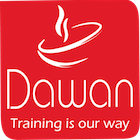Goals
- Build ergonomic, secure websites
- Integrate semantic tags into your pages
Program
General definitions: ergonomics, waterline, format, mobile supports, etc.
Law of Gestalt and Fitts
Basic principles, rules and standards
Usability, personas
UX
Understanding navigation systems
Managing large sites
Understanding accessibility
Rules for the accessibility of Web content WCAG 1 and 2
RGAA: Accessibility repository for Administrations
Accessiweb: presentation of the repository
Section 508, UWEM
ATAG and UAAG standards Audit
tools: WAT, WDT, browser extensions
Validation: levels, tools
Reminder of the basics: OSI, TCP, HTTP layers, Return codes, persistence and pipelining
HTTP methods: GET, POST, OPTIONS, PUT, DELETE, HEAD, TRACE
Concept of cookies, attributes, associated options
Encryption and hash; modern algorithms
HTTP authentication (basic, digest)
SSO (Single Sign On) systems
Non-attack security: disasters and accidents
Social attacks, examples and effects
SQL injection attacks, emails, LDAP, XPath, arbitrary code – example of input filtering
Malicious URLs: execute a URL (HTML injections, HTTP response splitting, etc.)
Malicious URLs: consequences – Cross Site Scripting, Cross Site request Forgery
Obfuscation and information leakage (accessible code, visible errors …)
Practical workshop: fun tests and attempts
Valuation of the content of a web page to improve referencing
Semantic and semantic hypertext embedded in HTML pages
New semantic HTML5 tags
Markup formats: Microdata, Microformats, RDFa
Rich Snippets: presentation, test tools
Compatibility of Rich Snippets with types of content: Reviews, People, Products, Events, …
Microdata: HTML 5 specifications
New attributes: itemscope, itemtype, itemprop, itemref, itemid
Microdata API support
Schema.org: presentation, documentation
Type hierarchy
Implementation, best practices
Duration
2 days
Price
£ 1301
Audience
Webmasters
Prerequisites
Basic knowledge of the web and networks
Reference
SIT519-F
Sessions
Contact us for more informations about session date

